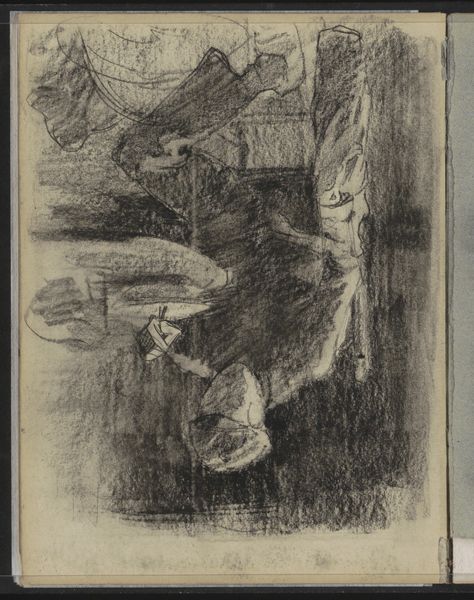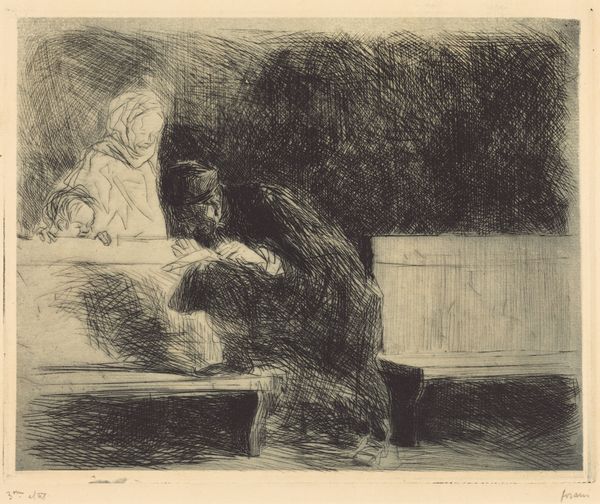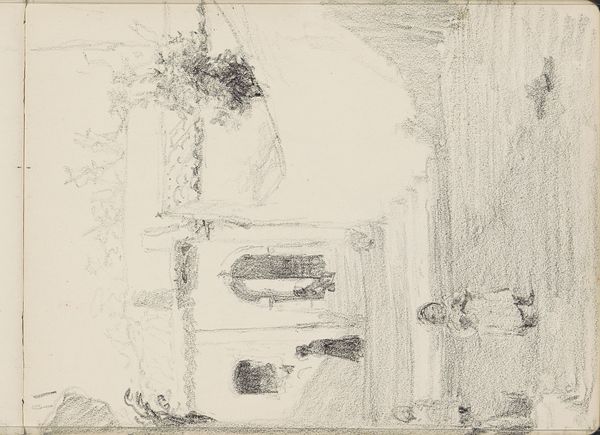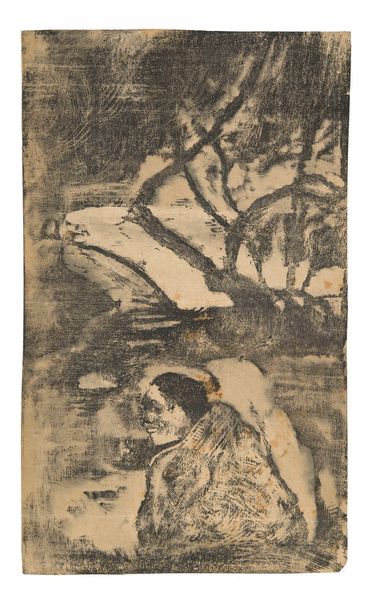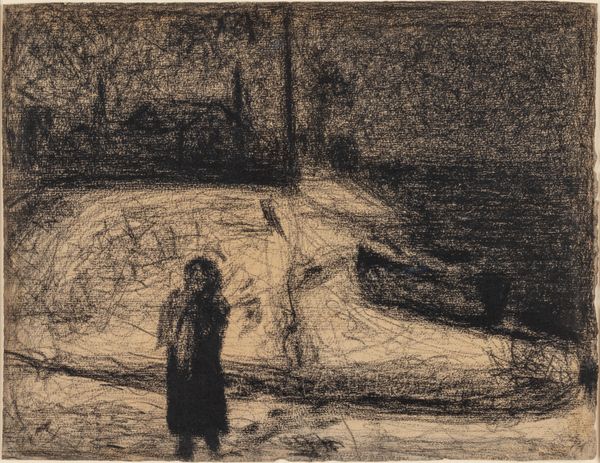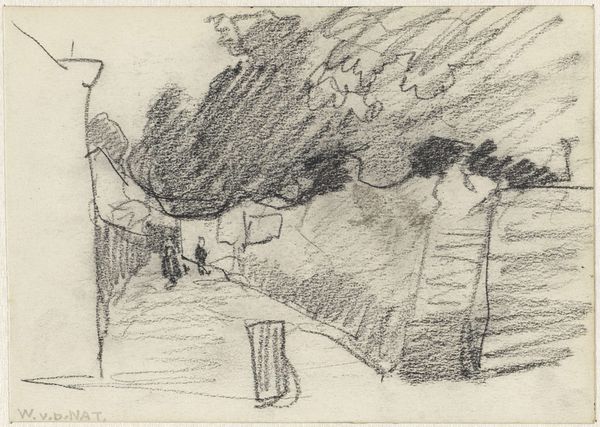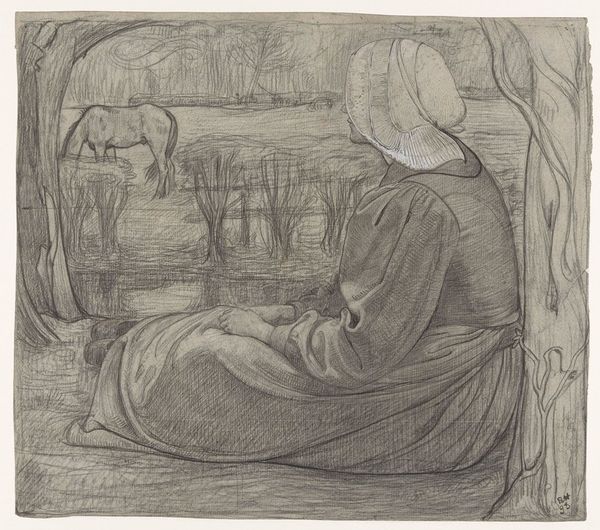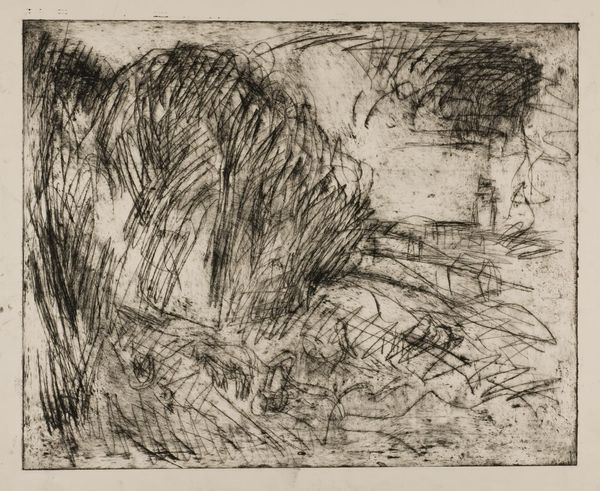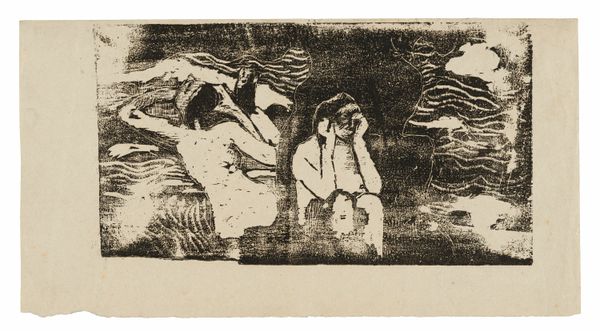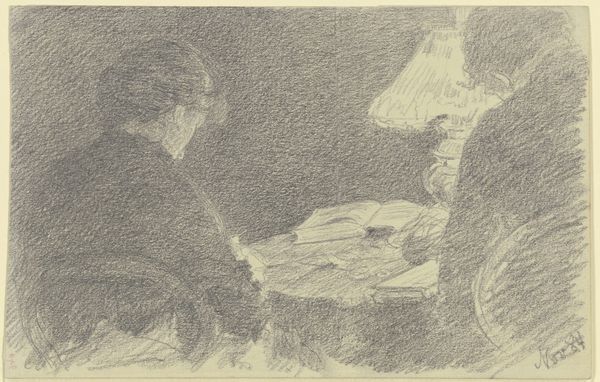
Copyright: Public Domain: Artvee
Editor: We're looking at Édouard Vuillard's "Folding the Linen," a pencil drawing from 1893. It depicts three women, their figures loosely sketched. I'm struck by the apparent mundanity of the scene, and I'm wondering how to engage with this portrayal of domestic labour? What do you see in this piece, beyond its surface? Curator: It's that very “mundanity” that becomes crucial. Vuillard, closely linked with the Intimist movement, highlights the hidden labour, mostly of women. The act of "folding linen" becomes almost a ritual. Do you notice how the figures almost blend with their surrounding? The texture created with pencil and etching is such, that women could seem as elements from the walls. Editor: Yes, the blurring creates a sense of them almost fading away. So, you're saying that by focusing on the domestic, Vuillard is implicitly commenting on the socio-political standing of women in the 19th century? Curator: Exactly! Consider the late 19th century, a period where women's roles were still largely confined to the domestic sphere. Vuillard, through his intimate depictions, subtly critiques this confinement. The drawing isn't just about linen; it's about the labour divisions of the bourgeoisie. Are these women free to express themselves and choose the best life path for them? It's a potent, if understated, commentary on gender roles. Editor: It is very interesting. I initially thought this piece had very little to say. Now I understand how art can unveil stories deeply intertwined with social issues and lived experiences. Thank you! Curator: Absolutely. Art is not separate from life; it's a reflection, a commentary, a call to action – if we learn how to look closely and ask the right questions about gender and societal issues!
Comments
No comments
Be the first to comment and join the conversation on the ultimate creative platform.
